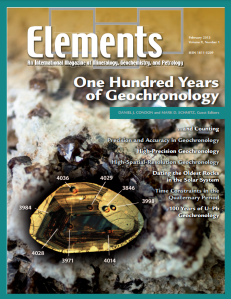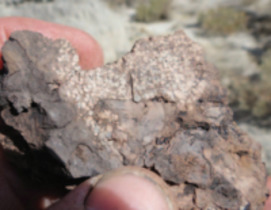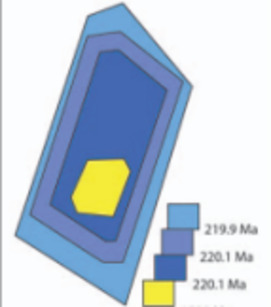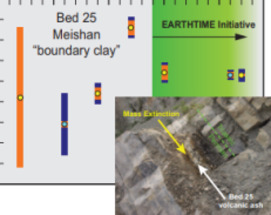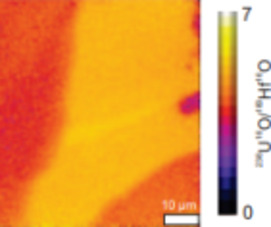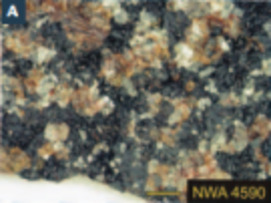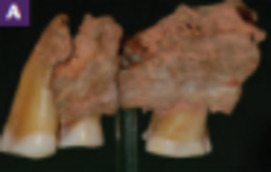
One Hundred Years of Geochronology
Daniel J. Condon and Mark D. Schmitz – Guest Editors
Table of Contents
In 1913, Frederick Soddy’s research on the fundamentals of radioactivity led to the discovery of “isotopes.” That same year, Arthur Holmes published his now famous booklet The Age of the Earth. Combined, these two landmark events established the field of science we know as “isotope geochronology.” Today, isotope geochronology underpins much of our knowledge of the absolute age of minerals and rocks, and the records they contain. This field is constantly evolving, reflecting and responding to scientific drivers that require more highly resolved timescales, the microscopic analysis of smaller zoned minerals, or the generation of robust data sets in novel materials. This series of articles provides perspectives on the state of the art in the field of radioisotope dating—from the challenges of dating the Solar System’s oldest materials to resolving the record of Quaternary climate change, and the four and a half billion years in between.
- One Hundred Years of Isotope Geochronology, and Counting
- Accuracy and Precision in Geochronology
- High-Precision Geochronology
- High-Spatial-Resolution Geochronology
- Dating the Oldest Rocks and Minerals in the Solar System
- Time Constraints and Tie-Points in the Quaternary Period
- Revolution and Evolution: 100 Years of U–Pb Geochronology
AHF Analysentechnik
Bruker
Bruker Nano
FEI
Excalibur Mineral Corporation
Geochemist’s Workbench
JEOL
McCrone Microscope and Accessories
Rigaku
Savillex
Society of Economic Geologists
SPECTRO
TSI
v9n2 SERPENTINITES: KEY ROLES, FROM GEODYNAMICS TO THE ORIGIN OF LIFE
Guest Editors: Stéphane Guillot (University of Grenoble) and Keiko Hattori (University of Ottawa)
Serpentinites, primarily composed of serpentine minerals and formed by hydra- tion of peridotites, increasingly attract the attention of a wide range of scientists, including geophysicists, structural geologists, engineers, and astrobiologists. As serpentinites have wide stability fields, they form in a variety of environments, from the Earth’s surface to the interior of the mantle. They are important as reservoirs of water in the deep mantle and in the recycling of elements in sub- duction zones. Because of their physical properties, serpentinites play important roles in seismic activity and geodynamics, including earthquakes in subduction zones, rifting, oceanic spreading, strike-slip faulting, and the exhumation of deeply subducted rocks. Serpentinites are also economically important because obducted serpentinites contain more than half the world’s reserves of nickel. The formation of serpentinites is accompanied by the production of hydrogen and methane, producing unique ecosystems on the ocean floor. The generation of hydrocarbons during serpentinization is the essential fi rst step in the origin of life on Earth and possibly other planets.
- Serpentinites: Essential Roles in Geodynamics, Arc Volcanism, Sustainable Development, and the Origin of Life Stéphane Guillot (University of Grenoble) and Keiko Hattori (University of Ottawa)
- Serpentinite: What, Why, Where? Bernard W. Evans (University of Washington), Keiko Hattori (University of Ottawa), and Alain Baronnet (University of Marseille)
- Rheology and Tectonic Significance of Serpentinite Greg Hirth (Brown University) and Stéphane Guillot (University of Grenoble)
- Serpentinite Carbonation for CO2 Sequestration Peter Kelemen (Columbia University) and Gregory M. Dipple (University of British Columbia)
- Nickel Laterite Ore Deposits: Weathered Serpentinites Charles R. M. Butt (CSIRO, Australia) and Dominique Cluzel (University of New Caledonia)
- Serpentinites, Hydrogen, and Life Tom M. McCollom (University of Colorado) and Jeffrey S. Seewald (Woods Hole Oceanographic Institution)
- One Hundred Years of Geochronology (February 2013)
- Serpentinites (April 2013)
- The Mineral-Water Interface (June)
- Continental Crust at Mantle Depths (August 2013)
- Nitrogen and Its (Biogeocosmo)Chemical Cycling (October 2013)
- Garnet: Common Mineral, Uncommonly Useful (December 2013)
Download 2013 Thematic Preview


